There’s something extraordinarily relaxing about having water in a garden and a pond is one way of achieving this. It’s a fabulous resource for wildlife as well as a great excuse for introducing more plants into your garden as they can turn the most average looking pond into a thing of great beauty.
Pond plants
Ponds have a tendency to ‘green up’ with algae, especially if sited in full sun. Including plants can give clearer water and, if you’ve got fish, help supply more oxygen for them.
When choosing plants for the pond you first need to establish if you’re going to put fish in it or not.
If you do decide to have fish, make sure to section off new plants until they’ve grown new roots. This is because fish have a tendency to eat plant roots.
Pond plants are classified into five main groups: moisture loving, marginal, oxygenators, deep-water and floating. It’s possible to have plants from all these groups growing in the same pond.
Moisture loving
Plants that like to grow in wet soil; for example, hostas, ferns and primula. They look great planted near or around the edge of a pond as they soften the edges and add a bit of height.
If your soil isn’t naturally wet, you can easily make your own bog garden.
Do this by lining a dug-out area with leftover pond liner or heavy black plastic. Make a few drainage slits in the side and bottom, then cover with soil. Next, water it thoroughly (preferably with rainwater) and then leave to settle for a couple of days before planting.
Hosta ‘Honeybells’ (plantain lily)
This herbaceous perennial produces long soft green deeply ridged leaves and scented soft lilac colour flowers late summer.
- Flowers July to August
- Fully hardy
- Grows to 90cm tall and 80cm wide
- Moist but well-drained
- Partial shade
- Sheltered
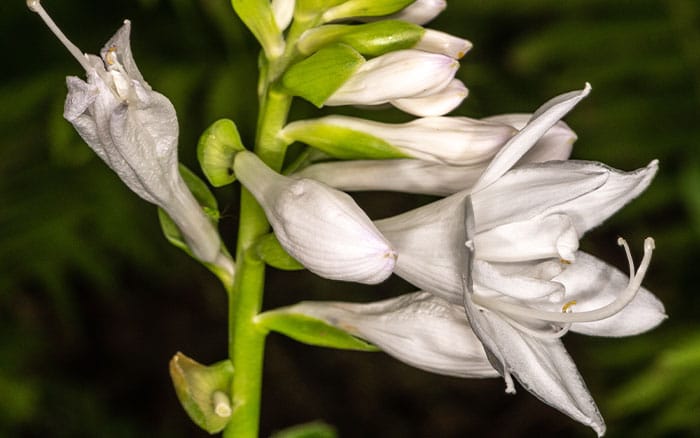
Marginal plants
The good news is that there are hundreds of marginal plants to choose from.
They like to grow in very damp soil or in water depths of either up to 20cm or 20-30cm. So, check the label carefully before you buy to make sure you’ve got the right growing conditions for the plant.
A lot of pre-formed pond liners have marginal shelves built in around the edges.
If you’re fitting a pond liner, you can create a marginal shelf by digging one out at a spade’s depth at the time of digging the pond. Marginals should ideally be planted into aquatic baskets filled with aquatic compost to feed the plant and allow roots to freely grow out of the basket. Marginals can hide pond edges to make the area feel more natural.
Myosotis scorpioides (water-forget-me-not)
Unlike garden forget-me-nots, which tend to be biennial, the water types are perennial, gradually expanding into large clumps. Great for hiding the edge of pond liners, it can be planted in an aquatic basket.
Alternatively, they can be planted directly into soil in shallow water, no deeper than 20cm, near the pond edge. Cut back plants after flowering.
- Flowers March to May
- Fully hardy
- Grows to 1m tall and 1.5m wide
- Poorly drained soil
- Full sun or partial shade
- Exposed or sheltered
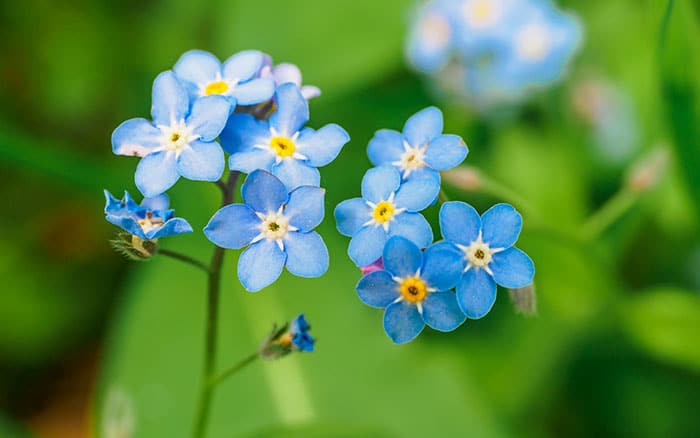
Caltha palustris (marsh marigold)
This plant has gorgeous bright yellow flowers much loved by hoverflies, bees, and butterflies. It should be planted in a water basket with soil in by the edge of the pond in water no deeper than 10cm.
- Flowers March to May
- Fully hardy
- Grows to 50cm tall and 50cm wide
- Poorly drained soil
- Full sun
- Exposed
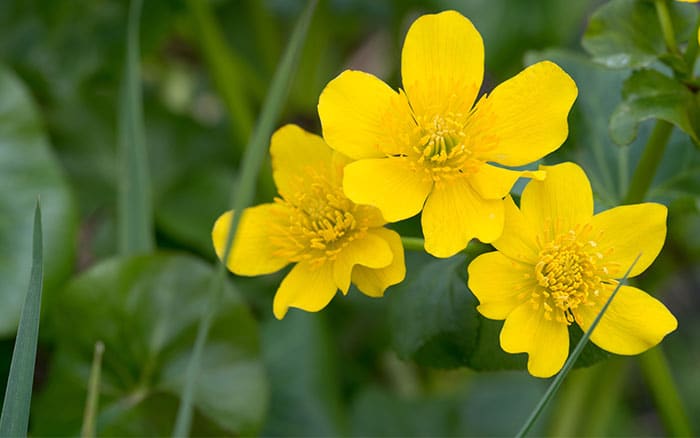
OXYGENATING PLANTS
A big visual problem for pond owners is green algae covering the water’s surface. Algae loves sunshine and nutrient rich water. Including plants from the oxygenating and floating groups can help to reduce the algae.
These plants do what the title says, produce lots of oxygen. They are great at keeping green algae at bay and easy to look after.
Often sold as bunches of stems tied together; all you need to do is throw them in the pond! Some sink and grow to the surface, others float. In either case aim to keep no more than one third of the water surface covered with them.
Ceratophyllum demersum (hornwort)
This plant is one of the best oxygenating plants to have in a pond. Throw the bunched stems in the water and don’t be tempted to plant in a soil basket as this will only rot the stems.
- Submerged deciduous plant
- Hardy
- Grows up to 10cm tall and 1.5m wide
- Poorly drained
- Full shade, full sun, or partial shade
- Exposed or sheltered
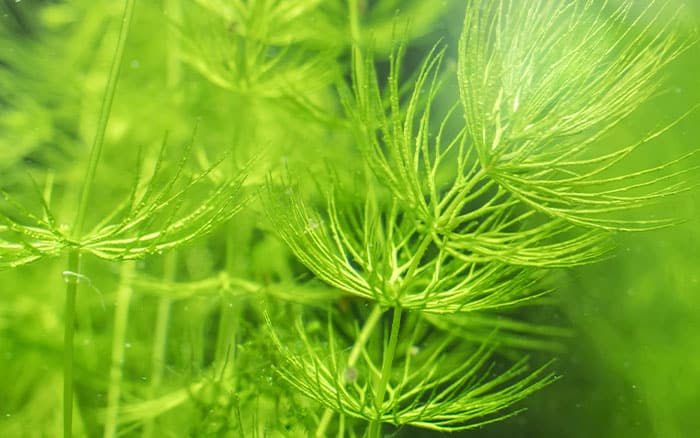
Deep-water plants
The most well-known deep-water plants are waterlilies which come in a huge range of colours and sizes from large to pygmy.
They’re classified as dwarf, small, medium, and vigorous, so choose the right size for your pond.
Some types, such as Nymphaea alba, create root balls up to 60cm wide. Plant in large planting baskets and give them additional feed during the growing season.
Nymphaea alba (white waterlily)
This medium size water lily has showy, white, cup shaped flowers. The rounded leaves span 30cm and the flowers are 20cm wide. Deadhead and remove any yellowing leaves regularly.
- Flowers June to September
- Hardy
- Grows to 10cm tall and 70cm wide
- Poorly drained
- Full sun
- Exposed or sheltered
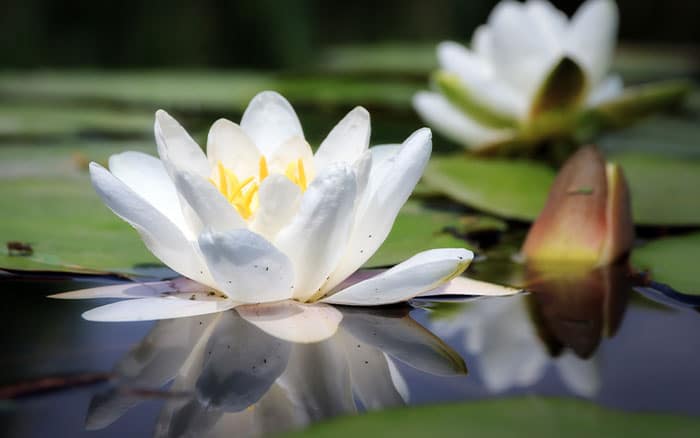
Aponogeton distachyos (water hawthorn)
This pretty plant is a smaller, cheaper alternative to waterlily. They have white, vanilla scented flowers in spring and sometimes again in the autumn. They can go dormant during hot summers.
Please note that it is listed in the Republic of Ireland as an invasive non-native plant .
- Flowers March, sometimes also October
- Hardy
- Grows to 10cm tall and 70cm wide
- Good quality aquatic compost
- Full sun
- Exposed
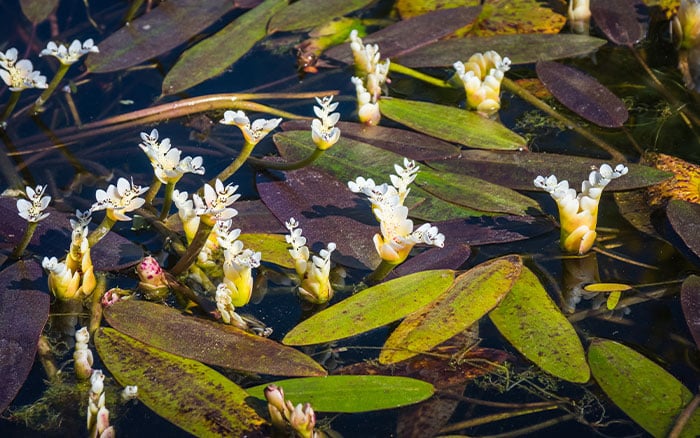
Floating plants
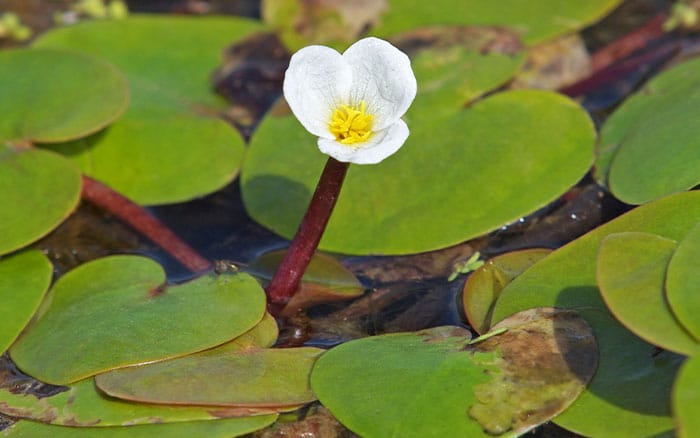
Floating plants sit on the water’s surface. Like oxygenators, they don’t need to be planted in soil because they get all the nutrients they need from the water.
Their leaves help keep algae at bay by reducing the amount of sun getting into the pond.
They’re great plants for beginners who need to control pond algae and probably best to choose a hardy plant like frogbit because tropical species plants like water lettuce tend to die as soon as the weather turns cold.
Take your pick of pond plants to add some more life to the space. It’ll ensure your space looks natural and full of colour, as well as making it a safe place for your fish, or a welcoming environment to wildlife.
David Domoney is a Chartered Horticulturalist, Broadcaster, and Author. David has worked with a number of the UK’s leading garden retailers as a plant buyer and strategic consultant. With more than 30 years experience, in horticulture, David is as passionate about plants now as he was when he bought his first plant at a village fete.

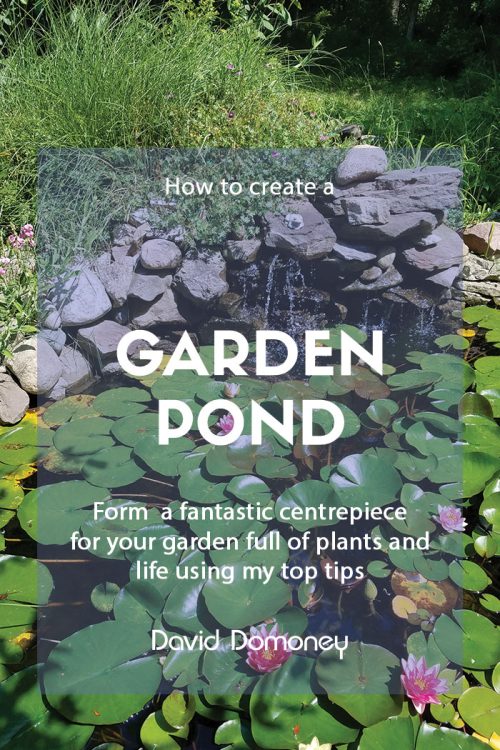


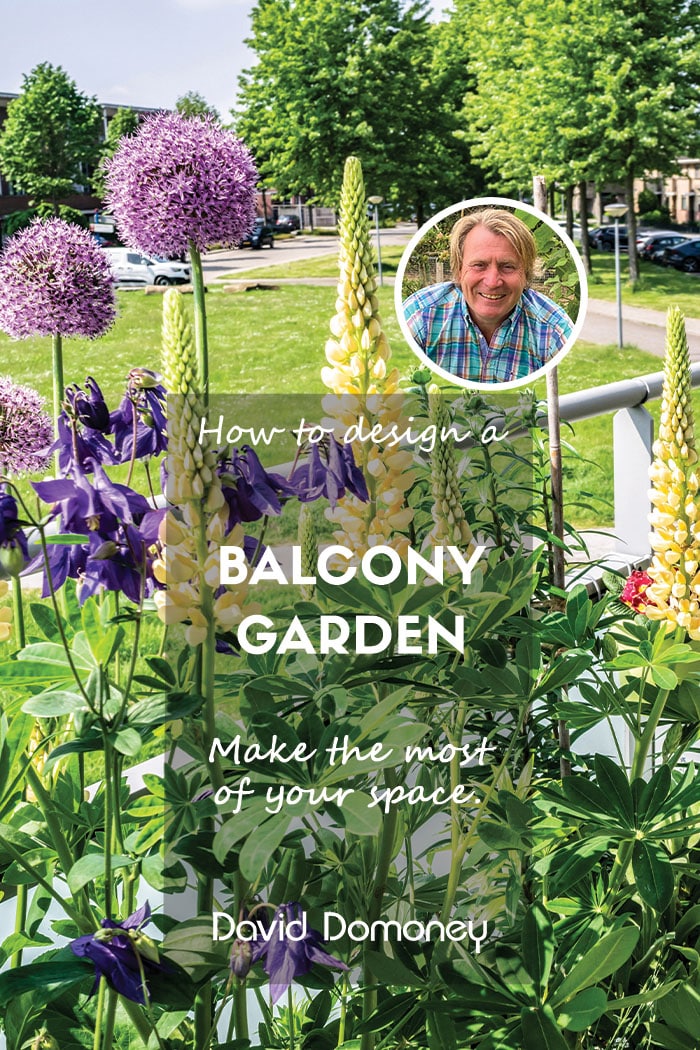
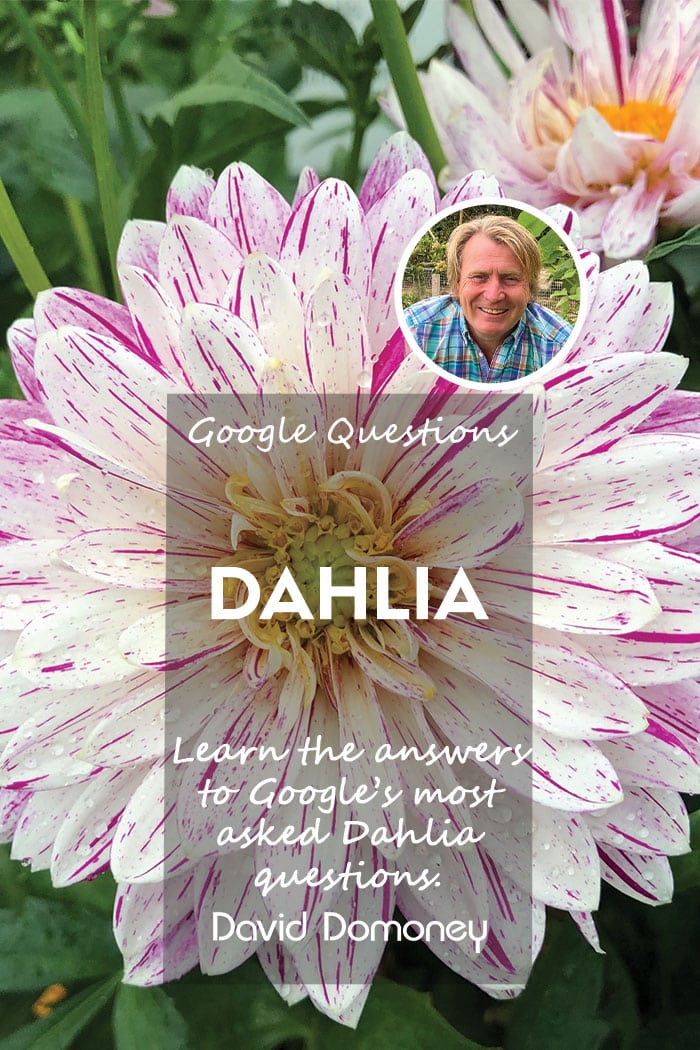
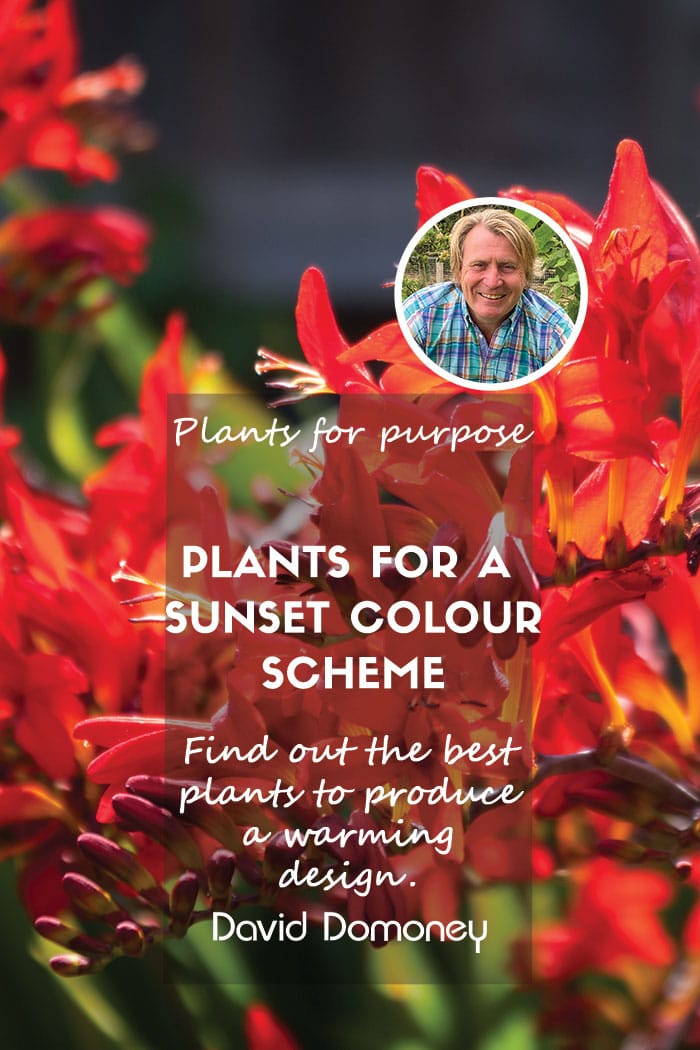
Leave A Comment